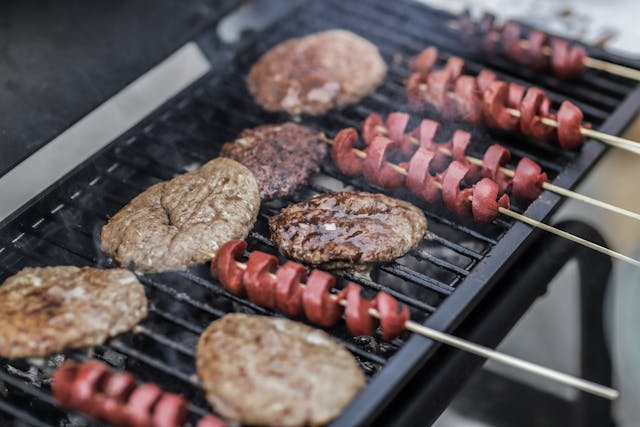
What causes gout? Gout is caused by a buildup of uric acid crystals in joints, which leads to a form of inflammatory arthritis. You have probably heard of gout. King Henry VIII was, amongst other things, famous for suffering from gout. It was often an illness associated with rich and powerful people because the majority of people were too poor to be able to afford enough food to get gout. He suffered from it considerably in later life and it caused him a lot of mobility issues. Probably psychological issues as well because in his youth he was a very athletic king, he was taller than most people, and very muscular. He let himself go, especially after he was injured while jousting in 1537.
The word gout came into English from French and into French from Latin. The Latin word was “gutta” and it meant “drop” or “droplet”. The idea was that gout was caused by something poisonous dropping into the blood and accumulating in the joints.
Gout is a form of arthritis because it causes swelling and pain in the joints. It is often located in the joint of the big toe, but it can appear in any joint. The pain is not constant, but comes and goes. The joint becomes very swollen ,which causes pain, but once the swelling goes down, the pain goes away. Gout itself, is not fatal, but it can lead to other illnesses that are.
Gout is caused by a buildup of uric acid crystals. So, what are uric acid crystals? Uric acid is formed in the body when we metabolize purines. Purines are molecules made from carbon and nitrogen atoms. We have two types in our bodies. We have the ones that we produce ourselves. They are in our cells, and they are inside our DNA. They are responsible for making the pairings in DNA and the double helix shape. Without them, we would not have DNA. When our cells die, the cells and these purines are processed out of the body. The second type are the ones we take in when we eat plants and animals. Because they are in all cells, they are in everything we eat. We process the ones we eat in the same way that we process the ones in our own cells. They are broken down to be disposed of and a byproduct of that is uric acid. The uric acid dissolves in the blood and is carried around the body to the kidneys. The kidneys filter it out and it is passed out of the body in our urine. If you don’t eat too much food with purine in it, you will be fine. Your body will easily deal with the quantity you have.
The problem comes when people eat a lot of foods that are high in purines. Foods that are high in purines are alcoholic drinks, game meats, kidney, brains, liver, and intestines, and some seafood. And this is the reason why gout became known as a king’s disease. The majority of people wouldn’t have been able to eat many foods that were high in purines, and, even if they could, not to a level where it would make them sick. Henry VIII appears to have lived on beer and meat. That being said, there are also genetic conditions as well. Some people are more genetically predisposed to a buildup of uric acid than other people are.
If you eat too many purines, the amount of uric acid in your body builds up to a level where the kidneys cannot remove it. When that happens, you are at risk of gout and of kidney stones. If you have a lot of uric acid, it can crystallize into monosodium urate, which is a solid. The urate forms in sheets that make needle shaped crystals. The crystallization happens in the joints, and the needles irritate the membrane of the joint, leading to inflammation. The pain is caused more by the body’s reaction to the needles of urate crystals than it is by the crystals themselves. The most commonly affected joint is the joint in the big toe. This is mainly down to temperature. Uric acid has a solubility point that is dependent on temperature. At body temperature, it is less likely to solidify. If the temperature drops, it is more likely to solidify. The feet generally have a lower body temperature than the rest of the body because they are farther away and in contact with the ground. The big toe also has a large surface area in relation to its volume, so it loses heat easily. That means the big toe is the coldest part of the body and the place where gout causing urate crystals are most likely to form. And that is what I learned today.
Sources
https://www.hopkinsmedicine.org/health/conditions-and-diseases/gout
https://sellymanormuseum.org.uk/news/2020-11-17/tudor-myths-henry-viii
https://en.wikipedia.org/wiki/Gout
https://en.wiktionary.org/wiki/gout
https://www.etymonline.com/word/gout
https://www.hospitaldaluz.pt/en/health-dictionary/uric-acid-what-need-to-know
https://www.arthritis-health.com/types/gout/what-are-purines
https://en.wikipedia.org/wiki/Purine
https://gouteducation.org/uric-acid
https://pmc.ncbi.nlm.nih.gov/articles/PMC3975080
Photo by Luis Quintero: https://www.pexels.com/photo/steaks-and-skewered-sausages-on-grill-1857728/
